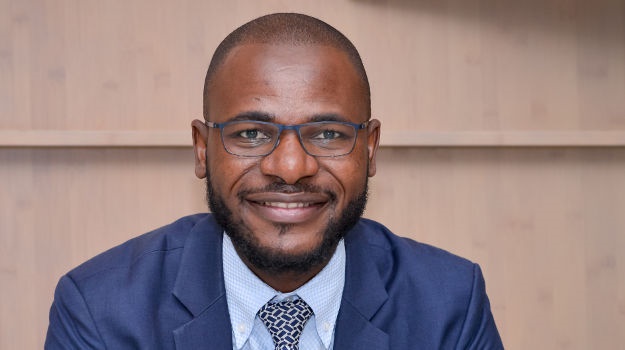


Isaah Mhlanga, chief economist at Alexander Forbes.
- Growth forecasts before Covid remained below 2% for the next three years
- Sooner or later, South Africa would have approached the International Monetary Fund for a structural adjustment program.
- We would need economic growth of at least 4.5% per year for a very long time to make debt sustainable, and much higher economic growth than that to meaningfully reduce unemployment.
The
years 2020 to 2023 will be lost for economic growth as it will not recover back
to pre Covid-19 level at prevailing forecasts.
If growth permanently doubles
the post Global Financial Crisis (GFC) average of 1.7%, it will not be until
2027 that the trend level will catch-up to that which would have prevailed in
the absence of Covid-19 shock. Any growth rate that is lower than 3% means that
there will be a permanent loss in income.
First let’s look at the general trend before Covid-19.
Real economic growth averaged 1.7% per year between 2009 and 2019. However, in
the five years to 2019, average growth moderated to 0.8% per year even as
global growth grew north of 3%.
The internal deterioration in economic activity
has been ventilated well and has been pointed at policy uncertainty resulting
in low business confidence and low growth. The credit rating downgrades
resulted in an increase in the interest rate burden for the state, which
crowded out public investment. There is the dysfunctional SOEs that have also under
delivered on their stated mandates while piling up and tapping into guarantees
that further worsened the fiscal space.
With
this backdrop, growth forecasts before Covid remained below 2% for the next
three years. So as a counterfactual, I assume a trend level that is based on
1.7% average growth permanently, which is higher than the SARB’s potential
growth estimates of 1.2% before Covid-19.
On this trend, real GDP would have
risen from R3.1 trillion in 2019 to R3.8 trillion in 2030. At the current
trajectory of the increase in debt, this growth trend would not be enough to
make the debt sustainable, which will imply that the sooner or later, South
Africa would have approached the International Monetary Fund for a structural
adjustment program, which the ruling African National Congress has, since the
dawn of democracy, vowed to avoid at all costs.
Covid-19
has hit growth hard and promises to leave a rearranged economy whenever its
done with us, which experts say it can be some 18 months away. Let’s work with the SARB’s forecast and see
what the future could look like. The central bank forecasts growth to contract
by 7% this year, recovering to 3.8% and 2.9% in 2021 and 2022. If we round up
the SARB’s terminal forecast and assume that growth will average 3.0% from 2023
onwards, the trend level GDP returns to 2019 level in 2022 and catches up to
the pre-Covid-19 path only in 2027. Under this scenario, only the years 2020 to
2021 become lost years and there is no permanent income loss over the next
decade.
Permanent loss in GDP
The
second alternative is if the economy contracts by 10% this year and rise to the
same SARB growth forecasts of 3.8% and 3.0% in 2021 and 2022. However, instead
of stabilising at 3.0% permanently, let’s say growth moderates to 2.0%
permanently. Under that scenario, the level of GDP only returns to 2019 level
in 2024, which means we would have four years of lost GDP. Over the decade, GDP
recovers to R3.6 trillion, which is R240 billion below the pre-Covid trend.
This is a permanent loss in GDP.
The
last alternative takes the most pessimistic scenario from National Treasury,
which said growth could contract by 16% as a worst case. Maintaining the same
growth forecast as in the second alternation – 3.8% and 3.0% in 2021 and 2022,
followed by 25 permanently – GDP only returns to 2019 level in 2028, almost a
decade loss in GDP with a R480 billion permanent shortfall compared to the pre-Covid-19
trend by the end of the decade.
What
does this all mean? First, a growth of 2% or lower in the current decade will
mean that GDP will be lower than 2019 levels for a very long time. Incomes and
the quality of life will be lower for many South Africans as well.
Second, the
deeper the contraction this year the higher the economic growth target we must
have in order to recover to 2019 level quickly and to catch-up to the pre-Covid-19
trend by the end of the decade.
Third, South Africa needs a minimum of 3.0%
permanently to bring back the old economy to its original path.
However,
what we need is not the old economy for it is not sustainable. We would need
economic growth of at least 4.5% per year for a very long time only to make the
debt sustainable and much higher economic growth than that to meaningfully
reduce unemployment. For this to happen, the infrastructure investment drive
that is under way must succeed.
This will need patient capital that sits with
pension funds and asset managers to participate and drive that investment. The
government’s job in this is to create a conducive regulatory framework that it
commits to enforce over the long term.
Anything that looks like the Gauteng Freeway
Improvement Project or the inability of Eskom to collect electricity tariffs
from some municipalities and townships will be the reason that will make the
projects too risky and not conducive for private pension funds.

